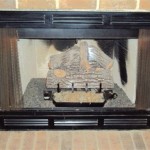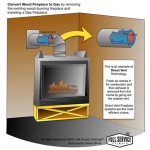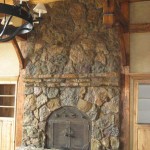How To Make A Fireplace In Minecraft PE
Minecraft Pocket Edition (PE), like its desktop counterpart, allows for extensive creativity and construction. A fireplace can serve as both a functional source of light and warmth, and a decorative element that enhances the ambiance of any Minecraft home. The creation of a safe and aesthetically pleasing fireplace requires careful planning and selection of materials, especially considering the potential for fire spread within the game.
The following guide provides detailed instructions on constructing a fireplace in Minecraft PE, emphasizing safety and offering design variations to suit individual preferences. Attention to detail regarding material choice and construction techniques is paramount for preventing accidental fires and achieving a visually appealing outcome.
Choosing Materials for Safety and Aesthetics
The selection of appropriate materials is the most critical aspect of fireplace construction. The goal is to contain the fire safely while complementing the overall design of the building. Non-flammable materials are essential for the core structure of the fireplace and the surrounding area. These materials prevent the uncontrolled spread of fire and maintain structural integrity.
Stone variants are highly recommended for the primary construction of the fireplace. Cobblestone, stone bricks, and andesite represent durable and widely available options. These blocks effectively resist fire and offer a natural, rustic aesthetic. Smooth stone and polished variants provide a more refined and modern appearance, suitable for contemporary builds.
Nether brick and its variations (red nether brick, warped nether brick, crimson nether brick) constitute excellent choices for creating a visually striking and fire-resistant fireplace. Nether brick blocks possess inherent fire resistance and add a distinctive, otherworldly element to the design. However, accessibility to the Nether dimension is required to acquire these materials.
Brick blocks also provide a classic and versatile option. They offer a warm, earthy tone that complements various building styles. Brick blocks are relatively easy to craft, requiring clay, which is typically found near water sources.
For decorative accents and detailing, consider using slabs and stairs made from the same primary material. These elements allow for intricate designs and smooth transitions, enhancing the overall visual appeal of the fireplace. Quartz blocks, slabs, and stairs offer a clean, white aesthetic that contrasts well with the darker tones of the fire and surrounding stone or brick. Iron bars or glass panes can be used to create a protective screen in front of the fire, preventing accidental contact while maintaining visibility.
Grate blocks, such as iron bars or even end rods strategically placed, can be incorporated to simulate a traditional fireplace grate. This adds a layer of realism to the design and enhances the visual appeal.
Step-by-Step Construction Guide
The construction process involves several key steps, each requiring careful attention to detail. Planning the location and dimensions of the fireplace is the initial step. The placement should be strategic, considering the overall layout of the room and potential fire hazards. Ensure adequate spacing between the fireplace and any flammable materials, such as wood or wool.
Begin by creating a base for the fireplace using the chosen fire-resistant material. The base should be at least three blocks wide and two blocks deep to accommodate the fire and provide a stable foundation. The height of the base can be adjusted to suit the desired design and proportions.
Build the walls of the fireplace around the base, using the same fire-resistant material. The walls should extend upwards to create a chimney or flue that directs smoke upwards. The height of the chimney will vary depending on the size of the room and the desired aesthetic. Ensure the walls are at least one block thick to prevent fire from spreading to adjacent blocks.
Create an opening at the front of the fireplace to allow for viewing the fire. The size of the opening should be proportional to the overall dimensions of the fireplace. Consider adding a decorative arch or mantel above the opening to enhance the visual appeal.
Line the interior of the fireplace with netherrack. Netherrack is a unique block that burns indefinitely when ignited, providing a continuous source of fire. Place the netherrack blocks within the base of the fireplace, ensuring they are fully enclosed by the fire-resistant walls.
Light the netherrack with a flint and steel. The netherrack will ignite and remain lit, creating the fire within the fireplace. Ensure the fire is contained within the boundaries of the fireplace and does not spread to any flammable materials.
Add decorative elements to enhance the visual appeal of the fireplace. Slabs and stairs can be used to create a mantelpiece or decorative trim around the opening. Iron bars or glass panes can be placed in front of the fire to create a protective screen. Consider adding andirons or other decorative elements to simulate a traditional fireplace setting. Bookshelves or other decorative blocks can be placed on either side of the fireplace to create a cozy and inviting atmosphere.
Design Variations and Customization Options
A basic fireplace design can be customized and adapted to suit various building styles and preferences. Creative experimentation with different materials and design elements can lead to unique and visually appealing fireplaces.
A rustic fireplace design can be achieved by using cobblestone or stone bricks for the primary construction. Incorporating exposed beams and natural wood accents can further enhance the rustic aesthetic. A large, imposing chimney constructed from rough-hewn stone can add to the overall sense of age and authenticity.
A modern fireplace design can be created by using smooth stone, quartz, or concrete blocks. Clean lines, minimalist detailing, and a focus on symmetry are characteristic of modern designs. Incorporating lighting elements, such as hidden spotlights or glowing blocks, can add a touch of sophistication. Consider a sleek, rectangular shape for the fireplace opening and a minimalist mantelpiece.
An integrated fireplace design seamlessly incorporates the fireplace into the surrounding wall or structure. This can be achieved by recessing the fireplace into the wall and creating a flush surface. This design requires careful planning and construction to ensure the fireplace is properly supported and fire-resistant. An integrated design can create a clean and uncluttered look, particularly well-suited for modern or minimalist interiors.
A corner fireplace design is ideally suited for smaller rooms or spaces with limited wall space. The fireplace is positioned in a corner of the room, maximizing space and creating a focal point. The triangular shape of the fireplace adds visual interest and can be customized with various materials and decorative elements.
A hanging fireplace design suspends the fireplace from the ceiling, creating a dramatic and visually striking effect. This design requires careful planning and construction to ensure the fireplace is securely supported. Chains or cables can be used to suspend the fireplace, adding to the industrial aesthetic. A hanging fireplace design is best suited for large, open spaces with high ceilings.
Implementing a hidden fireplace design provides a unique element of surprise. This can be achieved by concealing the fireplace behind a retractable panel or a secret door. The hidden fireplace is revealed only when activated, adding an element of intrigue and sophistication. This design requires careful planning and construction to ensure the concealment mechanism is seamless and functional.
Regardless of the chosen design, prioritizing fire safety remains paramount. Always use non-flammable materials for the core structure of the fireplace and surrounding areas. Regularly inspect the fireplace for any signs of damage or wear and tear, and promptly repair any issues.
Experimentation with different materials, sizes, and shapes allows for the creation of a fireplace that complements the overall design of the Minecraft world. The addition of a fireplace can significantly enhance the ambiance of any Minecraft home, providing warmth, light, and a sense of realism.

How To Build A Brick Fireplace With Chimney In Minecraft

Minecraft Pocket Edition Tutorial How To Build A Fireplace
.jpeg?strip=all)
6 Ways To Make Fire In Minecraft Wikihow

Minecraft How To Make A Working Chimney Pocket Edition

Minecraft How To Build A Fireplace Design Tutorial Easy Survival House

Minecraft Furniture Houses Building

How To Make A Fireplace And Chimney In Minecraft Furniture Episode 5

Fireplace Minecraft Pe

Minecraft Ps4 Fireplace Door Tutorial Ps3 Xbox Wii Pe

6 Ways To Make Fire In Minecraft Wikihow








